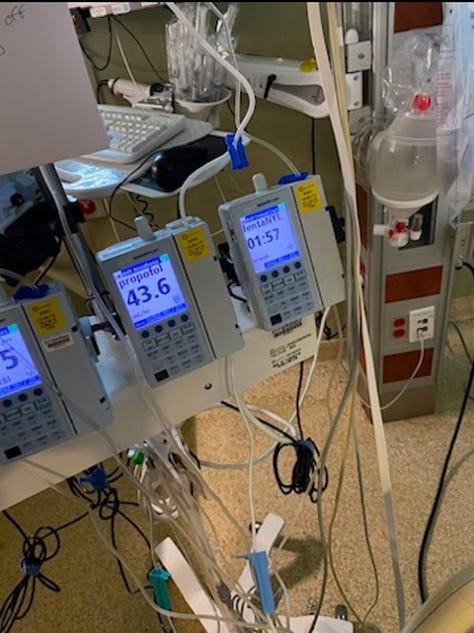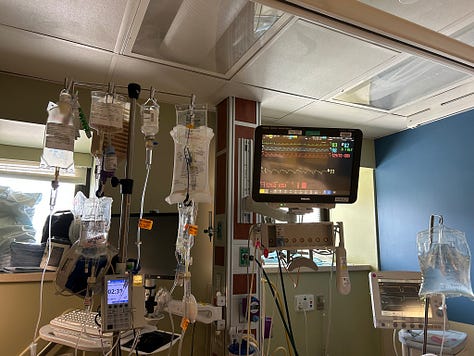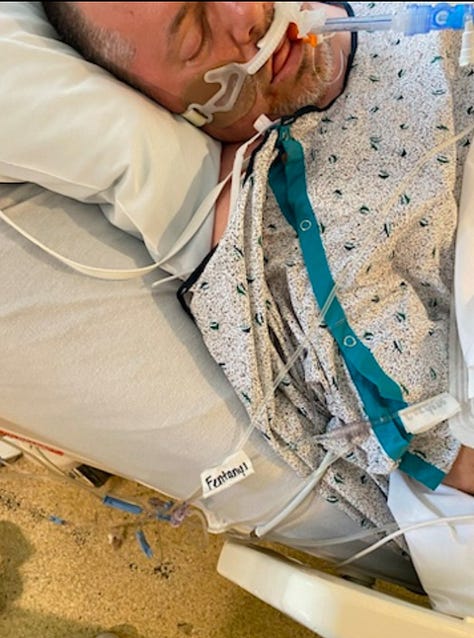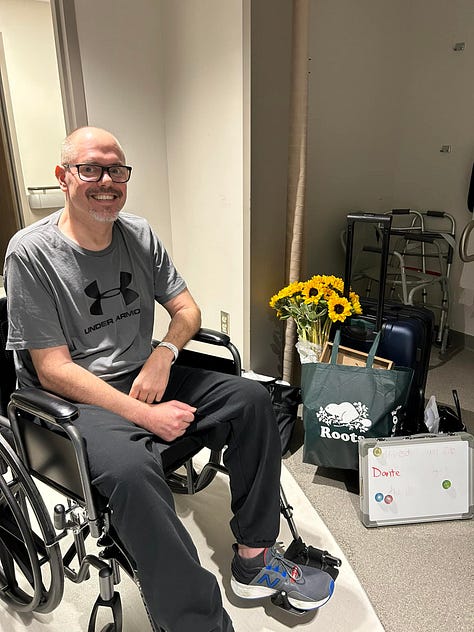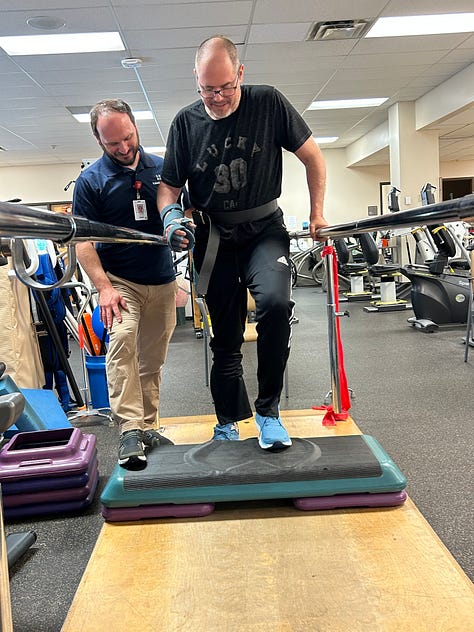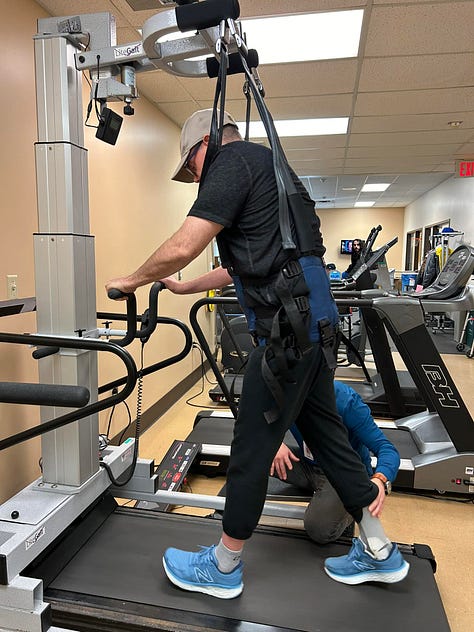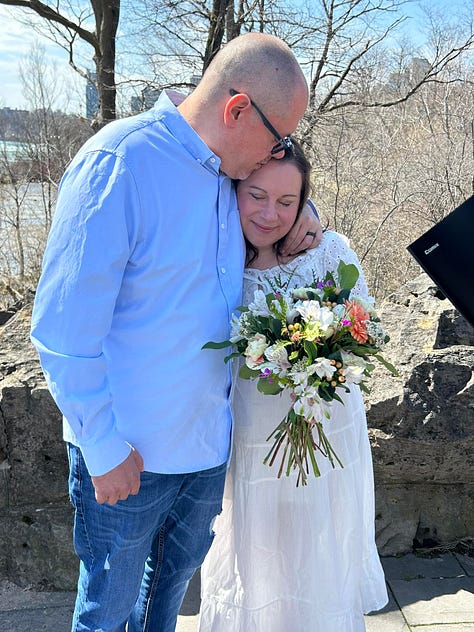Reclaiming Life After Stroke with the Power of AI
A Journey of Hope, Recovery, and Innovation in Stroke Healing.
The day I realized recovery wasn’t a straight path was the day everything changed for me. At first, I thought it was all about time—how fast I could regain what I’d lost. But that belief, I now understand, was holding me back.
A common mistake we all make? Believing that recovery ends where the conventional methods stop. I’ve been there—standing at the edge of frustration, wondering if this was all there was.
For a long time, I saw no way out of the cycle. The exercises felt repetitive, my progress sometimes stagnant, and my hope dimmed with every passing week in the hospital. I remember laying in my room, overwhelmed by the fear that maybe this was as good as it would get. But then, a breakthrough came, not through more effort, but through curiosity. What if the tools for change already existed, just waiting for me to discover them? That shift—from desperation to exploration—was the first milestone on my journey back.
Here’s what I learned: the tools are there, but we have to reach for them.
A Shocking Truth That Changed Everything
Did you know that 80% of stroke survivors face long-term disabilities? I didn’t. When I first heard that number, it felt like a punch to the gut—a statistic that could have easily become my reality. But instead of letting it paralyze me, I let it push me forward. That number wasn’t just a statistic; it was a call to action.
I started to wonder: how many of us feel trapped by our circumstances because we simply don’t know what’s possible? The truth hit me hard—I wasn’t just fighting my body; I was fighting my own limited perspective.
Then I discovered something extraordinary: AI wasn’t just a tool for scientists or tech enthusiasts. It was a lifeline, a way to enhance my progress. That discovery became another milestone, a moment when the fog began to lift.
The Steps That Rebuilt My Life
Recovery doesn’t come all at once. For me, it was a series of small victories, each one building on the last. Here’s how I began to reclaim my life:
Leverage AI for Personalized Recovery: I started with fitness app Planfit that adjusted exercises based on my progress. It was like having a coach who understood me better than I understood myself.
Track Progress Intelligently: I used a wearable device Apple Watch & Whoop Band that showed me data & patterns I couldn’t see on my own. It wasn’t just data; it was validation that every effort mattered.
Build a Support Network: Through social platforms, I connected with others on the same journey. Their stories became my fuel, their successes a reminder of what was possible.
Each of these steps wasn’t just about physical recovery—it was about rebuilding my sense of self. If you’re reading this, I hope you take that first step. It doesn’t matter how small it is; what matters is that you start. Because every step forward is a step away from where you’ve been.
Why I Believe In AI
Here’s what I’ve come to believe: recovery is not about going back to who you were. It’s about discovering who you can become.
AI taught me that. It’s not just about technology; it’s about unlocking potential. With AI, I found three things I didn’t know I needed: clarity, adaptability, and empowerment.
Let me tell you my story. On Sunday, April 23, 2023, I lost the ability to move my right arm from the shoulder down. After visiting the ER, I was diagnosed with a bleed in my brain from a ruptured arteriovenous malformation (AVM). This rare condition of tangled blood vessels resulted in irregular connections between arteries and veins. Since there was a high probability of a future bleed that could be fatal, it was heavily recommended that I have surgery to neutralize the affected blood vessels.
I was visiting my girlfriend (Audra) in the Toronto area when everything happened, so I had the surgery at Buffalo General Hospital, just a few minutes over the US border. On May 23, 2023, I underwent a transvenous embolization with a three-day anticipated stay in the hospital, followed by at-home therapy for my right arm.
There were complications, which caused the length of the surgery to double, and I experienced a series of mini strokes. Although the AVM was neutralized, they could not know how I was affected until I woke up.
I didn’t wake up. Over the next two weeks, doctors were forced to alter treatment daily and even hourly to counter new developments. In addition to the significant effects of the strokes, I developed a staph infection, pneumonia, a collapsed lung, severe eye inflammation, and a host of other complications. For the first several days, my survival was uncertain. Once I stabilized, it became a question of how much “me” would ever return.
After two weeks, they were able to remove the breathing tube. After three weeks, I said my first word. After five weeks, I was moved from the ICU floor to the rehabilitation floor. After eight weeks, I took my first step.
On August 19, 2023, I was released from the hospital and continued outpatient care in Buffalo. Those first few months at home were the most challenging of my life. Since then, I have slowly but steadily regained my physical and cognitive abilities. My left side is now 100%, and my right side is about 75%. Having left the hospital in a cognitive “haze,” I am now focused and back at work with an increased dedication to building my business.
Although I continue to improve every week, I can now reflect on my experience with the gift of a productive and happy life ahead of me. I am overwhelmed with gratitude. I spent 89 days in the hospital. Despite having no friends or family living in the state of New York, I never spent one day without a family member at my bedside. Physical, occupational, and speech therapists have spent over 350 hours (and counting) to get me to this point. And God’s wisdom allowed me to experience so much unconditional love at a time when I was ready to truly appreciate it.
Thank you to the unwavering support of my family and friends. Thank you to employers and clients who allowed us to weather this storm. Thank you to everyone who provided meals, helped with kids/pets, and sent unrelenting texts and calls of encouragement—even when we were in a place so dark we didn’t have the will to respond.
And thank you to my wife, who married me on April 9, 2024, once I could stand next to her on my own.
The lesson is simple: when you find the right tools, you find new strength. My journey is proof that with the right support and technology, the impossible becomes possible. Start small. Choose one tool, one step, one change. Let it guide you to the next milestone.
Recovery is a mosaic of small moments, each one pieced together with patience, effort, and hope. It’s not just about regaining what you’ve lost; it’s about building something new. And for that, I am deeply grateful. Every challenge, every setback, every discovery—they’ve all led me here. To you.
Final Takeaway: Take the first step. The rest will follow.
